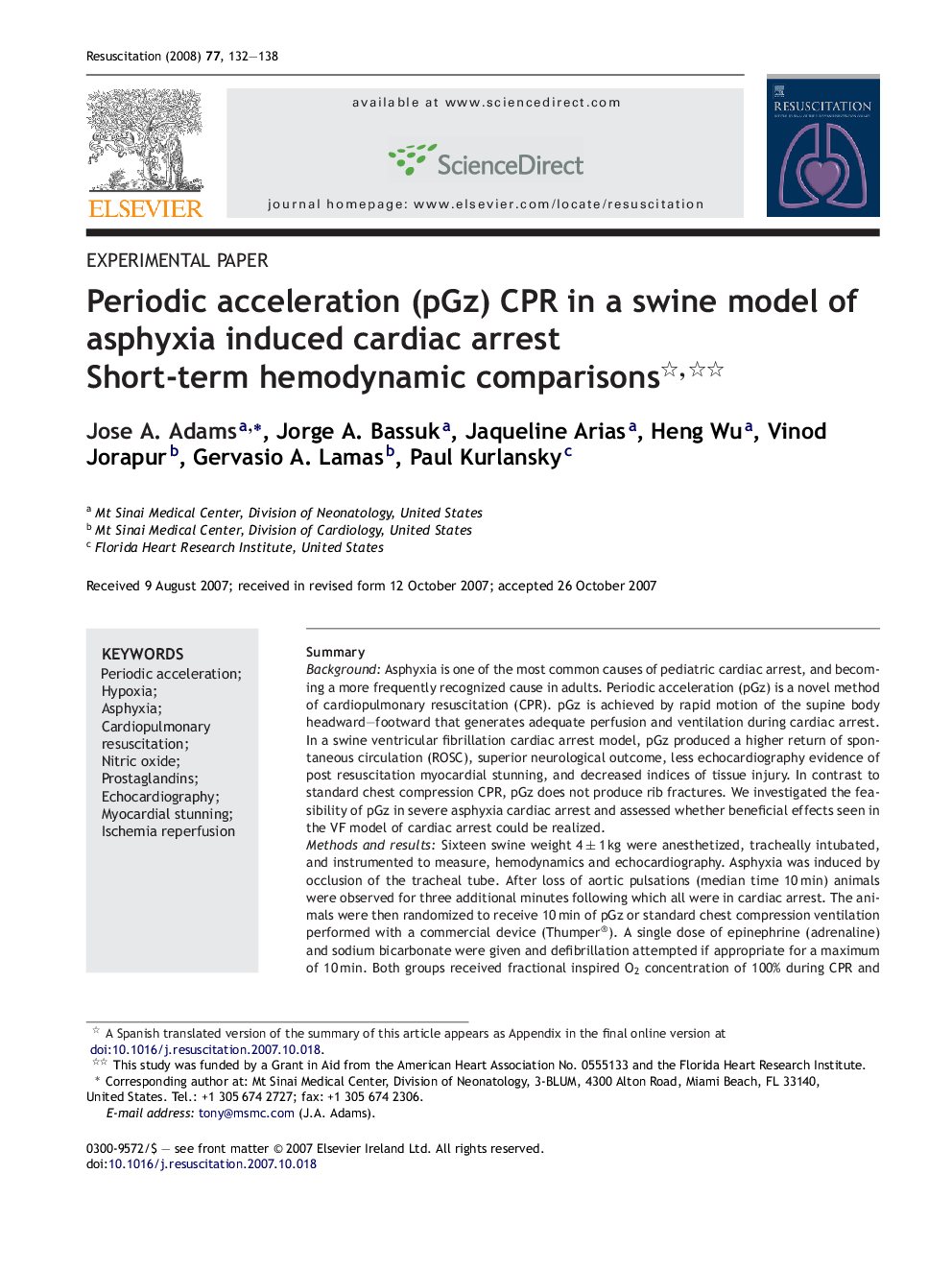| کد مقاله | کد نشریه | سال انتشار | مقاله انگلیسی | نسخه تمام متن |
|---|---|---|---|---|
| 3010746 | 1181528 | 2008 | 7 صفحه PDF | دانلود رایگان |

SummaryBackgroundAsphyxia is one of the most common causes of pediatric cardiac arrest, and becoming a more frequently recognized cause in adults. Periodic acceleration (pGz) is a novel method of cardiopulmonary resuscitation (CPR). pGz is achieved by rapid motion of the supine body headward–footward that generates adequate perfusion and ventilation during cardiac arrest. In a swine ventricular fibrillation cardiac arrest model, pGz produced a higher return of spontaneous circulation (ROSC), superior neurological outcome, less echocardiography evidence of post resuscitation myocardial stunning, and decreased indices of tissue injury. In contrast to standard chest compression CPR, pGz does not produce rib fractures. We investigated the feasibility of pGz in severe asphyxia cardiac arrest and assessed whether beneficial effects seen in the VF model of cardiac arrest could be realized.Methods and resultsSixteen swine weight 4 ± 1 kg were anesthetized, tracheally intubated, and instrumented to measure, hemodynamics and echocardiography. Asphyxia was induced by occlusion of the tracheal tube. After loss of aortic pulsations (median time 10 min) animals were observed for three additional minutes following which all were in cardiac arrest. The animals were then randomized to receive 10 min of pGz or standard chest compression ventilation performed with a commercial device (Thumper®). A single dose of epinephrine (adrenaline) and sodium bicarbonate were given and defibrillation attempted if appropriate for a maximum of 10 min. Both groups received fractional inspired O2 concentration of 100% during CPR and after resuscitation. Four animals in each group (50%) had an initial ROSC, however only two of the four initial survivors remained alive 3 h after ROSC. There were no significant differences in blood pressure, coronary perfusion pressure during CPR and after early ROSC between groups. pGz treated animals had significantly lower pulmonary artery pressure; 20 ± 4 mmHg compared to Thumper 46 ± 5 mmHg, 30 min after ROSC (p < 0.01). Surviving animals in both groups had severe myocardial dysfunction at 30 min after ROSC. At necropsy, 25% of the Thumper treated animals had rib fractures, while none occurred in the pGz group.ConclusionsIn a lethal model of asphyxia cardiac arrest, pGz is equivalent to standard CPR, with respect to acute outcomes and resuscitation survival rates but is associated with significantly lower pulmonary artery pressures and does not produce traumatic rib fractures.
Journal: Resuscitation - Volume 77, Issue 1, April 2008, Pages 132–138